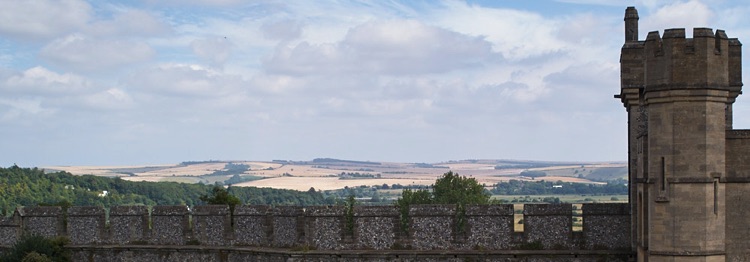
History
Bodiam castle was built between 1385 and 1388, toward the end of the castle building age by Sir Edward Dallingridge. His family name is a contraction of Dalling and Ridge, the area of Sussex where his family were land owners. Sir Edward made his fortune in the hundred years war against the French and through marrying well. He received a license to crenelate from King Richard II and built Bodiam castle.
There is some debate as to whether the castle was built for military use or simply to reinforce Sir Edward’s prestige with the nobility of England. The moat could be easily drained, the walls were relatively thin and contained a number of large mullioned windows, limiting the castles resistance to canon fire. My personal view is that while Bodiam was originally intended as a personal residence, Sir Edward added the fortifications due to the persistent threat of invasion from France. Sir Edward was an experienced soldier and would have been aware of the affect of canon fire on masonry over a long siege, but he would also see the value in having a fortified position to slow an enemy advance. Sir Edward was commissioner of array for Sussex and could use the castle as a rallying point for his Sussex militia.
Bodiam was besieged in 1484 by Richard III and 1643 by Parliamentarians under the command of Sir William Waller. The castle surrendered quickly on both occasions. After the 1643 siege, Cromwell ordered the victorious Parliamentarians to dismantle the castle. It remained in a ruined state until it was restored in the 19th century by the Marquis of Curzon.
The postern tower, shown above, was originally connected by a bridge to the South shore of the moat. The postern tower is close to the kitchens and may have been used to receive delivery of food and supplies. The Eastern side of the castle contains the kitchens and servants quarters.
Bodiam Castle
Highlights
Exterior view of the castle across the moat is exceptionally scenic
Intact curtain wall and towers
Interior is ruined, but may be explored
Some battlements are accessable via spiral staircase
Events sometimes staged in the summer
Visitor Information
Open year round with paid admission, free for National Trust members
Tea room, bathrooms and gift shop
Car park near entrance
Gallery
Map
Website



